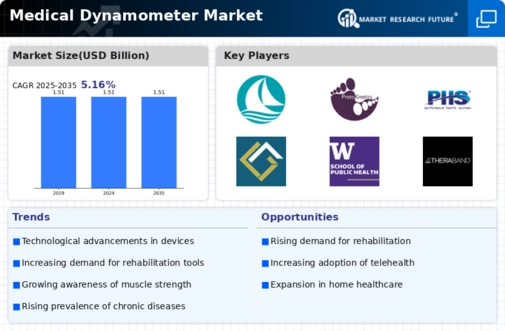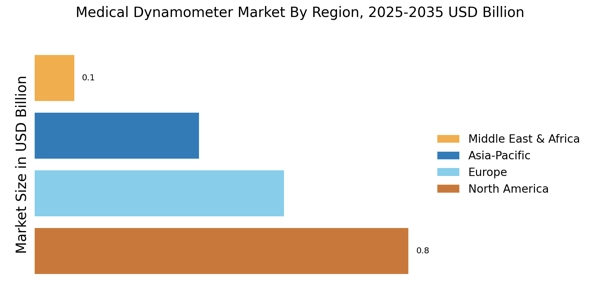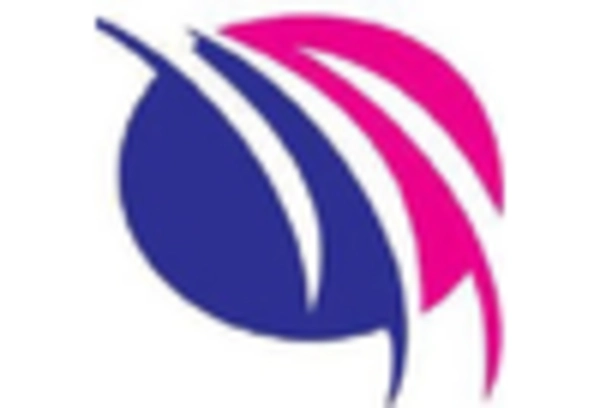Growing Geriatric Population
The aging population is a critical factor influencing the Medical Dynamometer Market. As individuals age, they often experience a decline in muscle strength and mobility, necessitating regular assessments to monitor their physical health. The World Health Organization projects that the number of people aged 60 years and older will double by 2050, creating a substantial demand for medical devices that can aid in the evaluation of physical capabilities. Medical dynamometers play a vital role in geriatric care, allowing healthcare professionals to tailor rehabilitation programs effectively. This demographic shift is expected to drive the Medical Dynamometer Market, as more healthcare facilities invest in these essential tools to enhance patient outcomes.
Technological Innovations in Medical Devices
Technological advancements in medical devices are significantly impacting the Medical Dynamometer Market. Innovations such as digital dynamometers, which offer enhanced accuracy and user-friendly interfaces, are becoming increasingly prevalent. These devices not only improve the precision of muscle strength measurements but also facilitate remote monitoring and data collection. The integration of smart technology into medical dynamometers allows for real-time feedback and personalized rehabilitation plans. As healthcare providers adopt these advanced solutions, the Medical Dynamometer Market is poised for growth. The continuous evolution of technology in this sector suggests a promising future, with potential for further enhancements in device functionality and patient engagement.
Rising Incidence of Musculoskeletal Disorders
The increasing prevalence of musculoskeletal disorders is a notable driver for the Medical Dynamometer Market. Conditions such as arthritis, back pain, and repetitive strain injuries are becoming more common, leading to a heightened demand for diagnostic and therapeutic tools. According to recent data, musculoskeletal disorders affect millions of individuals, resulting in significant healthcare costs and lost productivity. This trend necessitates the use of medical dynamometers for accurate assessment and rehabilitation, thereby propelling market growth. As healthcare providers seek effective solutions for these conditions, the Medical Dynamometer Market is likely to expand, driven by the need for precise measurement of muscle strength and function.
Focus on Evidence-Based Practice in Healthcare
The emphasis on evidence-based practice in healthcare is driving the Medical Dynamometer Market. Healthcare professionals are increasingly relying on objective data to inform treatment decisions and improve patient care. Medical dynamometers provide quantifiable measurements of muscle strength, enabling clinicians to develop tailored rehabilitation strategies based on empirical evidence. This shift towards data-driven approaches is fostering a greater demand for reliable assessment tools in clinical settings. As healthcare providers prioritize evidence-based methodologies, the Medical Dynamometer Market is likely to experience growth, as these devices become integral to the assessment and monitoring of patient progress in various therapeutic contexts.
Increased Investment in Rehabilitation Services
The rising investment in rehabilitation services is a significant driver for the Medical Dynamometer Market. Governments and private sectors are increasingly recognizing the importance of rehabilitation in improving patient outcomes and reducing long-term healthcare costs. This trend is reflected in the growing number of rehabilitation centers and outpatient services that utilize medical dynamometers for strength assessment and therapy. As more healthcare systems allocate resources towards rehabilitation, the demand for effective measurement tools, such as dynamometers, is likely to increase. This investment not only enhances the quality of care but also supports the expansion of the Medical Dynamometer Market, as facilities seek to incorporate advanced technologies into their rehabilitation programs.


















Leave a Comment